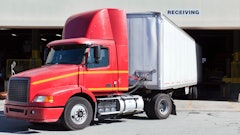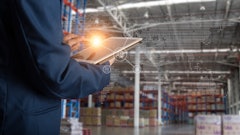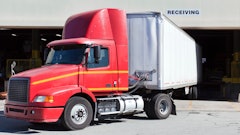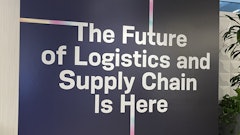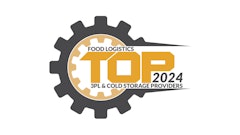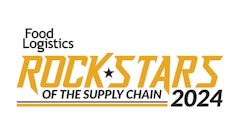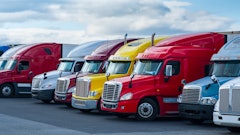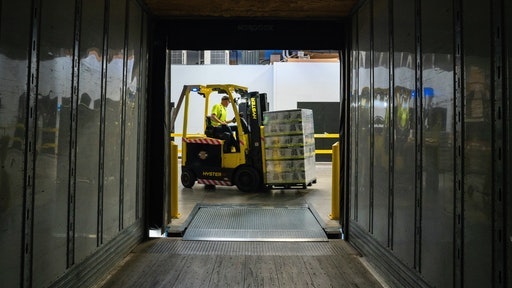
2020 was an unprecedented year for food manufacturers, as the Coronavirus disease (COVID-19) pandemic prompted rapid changes in consumer demand that upended and reshaped supply chains worldwide. These evolving disruptions have brought with them growing pains and a new appreciation for a more adaptable supply chain. Understanding how and why the food supply chain changed over the past year will provide learnings that are critical to any future transportation planning.
Where we’ve been
In March and April of 2020, much of the United States went into lockdown and the economy experienced a shock with a sharp decrease in consumer spending. The greatest decrease in spending was in the services industry, with businesses like restaurants closing their doors. In sharp contrast to the last major downturn more than a decade ago, which affected workers at all income levels, this one affected mostly lower-income earners. By July, there was a recovery in durable and nondurable goods spending, as higher income individuals continued to work from home and began spending more to outfit their home offices and prepare food for themselves, rather than spending on vacations or dining out. At the same time, the services industry continued to see depressed levels of business in most geographies.
From a logistics point of view, all this turbulence distorted the supply chain for many food manufacturers and transportation capacity tightened, as many shippers sought carriers who could move goods to meet increased demand at grocery outlets. Additionally, many truck driving schools were forced to close during lockdown, only exacerbating the capacity crunch and fueling a large increase in rates. The trucking industry responded with a surge in orders for new tractor trailers, which will enter the market later this year.
One beverage manufacturer’s journey
As shippers in a demand-driven industry, food and beverage companies had to quickly adapt to meet shifting consumer demand over the past year, all while continuing to observe evolving regulations, budgets, and global conditions. For example, one large beer manufacturer saw a decrease in demand for its kegs early on in the pandemic, as restaurants closed their doors and people stopped dining out. A simultaneous and dramatic increase in demand for canned and bottled beer at grocery outlets required the manufacturer to quickly shift the volume it was transporting to different customers.
Complexities arose as the manufacturer grappled with a shift in the volume it was transporting to different customers and the need for more trucks to move the same volume of beer in individual packaging rather than kegs. Other bottlers and food manufacturers ran into similar obstacles in the tight market, as did consumer packaged goods (CPG) producers who encountered increased demand. The shortcomings of the traditional RFP process, in which shippers contract with carriers in advance for a full year’s worth of freight transportation, were never more apparent than in 2020 amidst the pandemic, when the manufacturer needed more flexibility in order to account for the changes in volume on different lanes.
Recognizing that existing transportation procurement methods, such as its annual RFP, were not best meeting its needs for flexibility, the manufacturer explored other tools to quickly meet changing market conditions. It looked to data-backed solutions to quickly secure guaranteed coverage and locked-in rates for months at a time to meet the new demand. With these new tools in place, the manufacturer was able to avoid scrambling at the last minute to find trucks, and it was able to ensure on-time delivery to its customers.
The year ahead
Looking ahead, food manufacturers will continue to face uncertainty and tight capacity from the pandemic’s impact on the transportation industry. However, the increasing availability of vaccines is likely to bring a strong shift in transportation capacity and rates in the second half of the year.
By mid-2021, it is expected that enough of the population will be inoculated against COVID-19 and that the economy will return to pre-pandemic levels. At that time, expect a reversal in the personal consumption habits that increased demand for durable goods and their transportation in 2020. We may see a large decrease in durable goods consumption from current levels, and a moderate decrease in nondurable goods as well. This will coincide with a large increase in services consumption driven by pent-up demand. This shift will be particularly pronounced by higher income earners, who were less affected by the pandemic and will be more willing and able to spend on restaurant dining. With these shifts there will be a corresponding reversal in transportation capacity, and food shippers can expect to find increased truck capacity and decreased rates.
One more lasting change that emerged from the pandemic was that many employers have announced changes that allow their workforces to more easily work from home indefinitely. This will continue to have some impact on food manufacturers’ distribution, as many workers have traded downtown city life for the suburbs and lunch counters for dining at home. We will likely see the impact of these changed lunchtime habits well after the pandemic if workers continue to work from home.
Food shippers will continue to contend with rapidly evolving capacity needs in the year ahead. It will still be some time before the economy returns to pre-pandemic normalcy and timing the market will always remain somewhat unpredictable. By embracing new technologies, shippers can build a more flexible approach to transportation planning that can adapt to changing business needs and shifting market conditions. Those solutions that are designed to navigate uncertainty and unforeseen transportation needs will help food and beverage manufacturers confidently meet new business conditions while continuing to deliver high-quality service to their customers.







